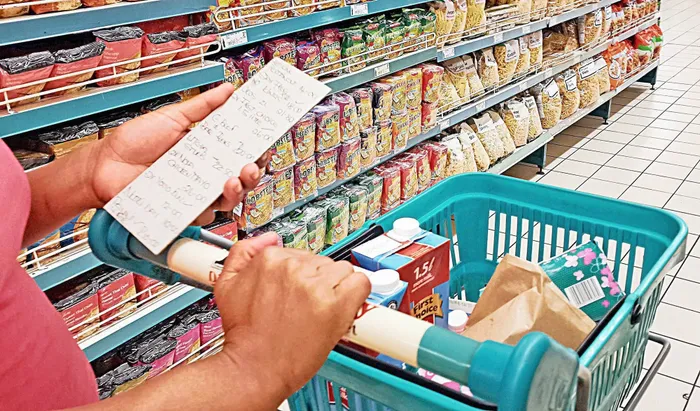South Africa escaped greylist, but consumers still carried heavy debt burdens

South Africa’s greylist exit boosted investor confidence, but households were still crushed by rising debt and high living costs.
Image: File photo
South Africa’s removal from the Financial Action Task Force greylist in October 2025 was widely welcomed as a key milestone for the country’s financial system and international reputation.
However, for households already drowning in debt, the path to financial recovery remained uncertain.
The FATF confirmed that South Africa had addressed all 22 action items required to restore global compliance with anti money laundering and counter terrorist financing standards.
The global watchdog noted “sustained progress in strengthening institutions and improving enforcement,” marking the end of almost three years of heightened monitoring and risk perception.
While the announcement boosted confidence across financial markets, experts cautioned that the real test would be whether struggling families experienced any meaningful improvement.
Neil Roets, CEO of Debt Rescue, said the removal restored credibility, but attention now needed to shift to what this meant for ordinary South Africans.
“Greylisting might have sounded like an investment problem, but for consumers it became a cost of living problem,” he said.
“Businesses paid more to move money and trade internationally, and those costs filtered down to ordinary South Africans through higher prices and tighter credit. The people who could least afford it ended up carrying the heaviest burden.”
The cost consumers paid
Between February 2023 and October 2025, the country’s financial reputation came under intense scrutiny.
Global banks viewed South African transactions as higher risk, resulting in stricter checks, higher fees, and slower cross border processes.
These pressures hit sectors that affected daily life including retail imports, transport, and remittances. Consumers felt the impact through delayed payments, costlier goods, and shrinking access to affordable credit. For over indebted households, the pressure was severe.
“With the initiation of the greylisting, households were already feeling the squeeze of rising food, fuel, and electricity prices,” Roets said.
“When financial institutions added risk premiums on top of that, credit costs went up, and disposable income went down. Many families were forced into survival mode, and that is where they still were.”
International bodies such as the IMF estimated that greylisting could reduce foreign capital inflows by up to 7.6 percent of GDP, a decline that influenced growth, employment, and borrowing costs.
Benefits still needed time to materialise
With the delisting, financial pressure on the system was expected to gradually ease. Reduced restrictions on international banking should support smoother trade and lower transaction costs.
The National Treasury described the development as “an important milestone that reflects the rebuilding of the rule of law.”
Analysts agreed that investor confidence would stabilise the rand and support the fight against inflation, key to protecting household purchasing power.
Roets said consumers would feel relief in phases.
“We would not see instant relief, but the groundwork was being laid,” he said.
“If the economy strengthened, lending became less risky and more affordable. That is when consumers would start to feel the difference, lower interest rates, stable prices, and more access to credit.”
How the country managed to turn the tide
Government and regulators implemented wide reforms that supported the decision to remove South Africa from the list.
These included enhancements to anti money laundering laws, improved transparency around company ownership, stronger oversight of high risk industries, and increased prosecution of complex financial crimes.
“These changes restored confidence in South Africa’s governance, but they must now translate into tangible relief for citizens who have been paying the price of the resultant instability,” Roets said.
Household finances remained under strain
Debt Rescue noted that although economic indicators were showing improvement, consumers continued to buckle under rising debt levels.
Data from the National Credit Regulator showed more than half of credit active consumers were over indebted, spending most of their income repaying debt.
“We were seeing families using credit to pay for essentials,” Roets added.
“The average South African household was trapped in a cycle of borrowing just to stay afloat. Greylisting did not create that problem, but it certainly worsened it.”
Economist Dawie Roodt said that delisting had brightened South Africa’s investment outlook and could make business operations far easier.
Proving progress must continue
Experts warned that the victory could be undone if oversight slipped.
The FATF would reassess South Africa in the coming years to ensure that enforcement efforts continued.
Treasury echoed this view, saying clean systems required ongoing cooperation between the public and private sectors.
Roets added that “staying off the list would depend on discipline and accountability.
Corruption, weak oversight, or political interference could undo everything. South Africa must keep proving that our reforms are real and lasting.”
A cautious new chapter
The end of greylisting offered hope, but it did not erase the financial pain experienced by households during this period.
Millions remained under intense pressure from debts accumulated while living through the squeeze.
“Getting off the greylist was not the end of the story,” Roets said.
“It was the start of a new chapter. If we sustain these reforms and use them to build a fairer, more stable economy, ordinary South Africans would finally begin to feel the relief they had been waiting for.”
Roets urged consumers to seek help early, noting that debt counselling under the National Credit Act remained a vital protection for those under extreme financial strain.
BUSINESS REPORT